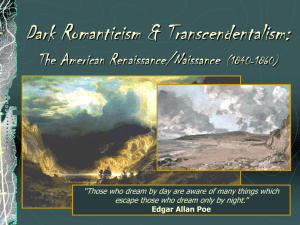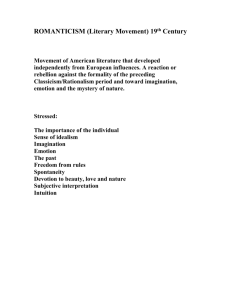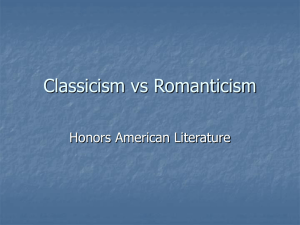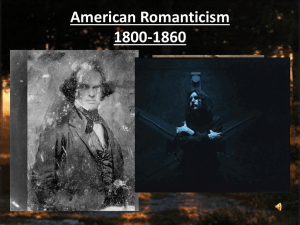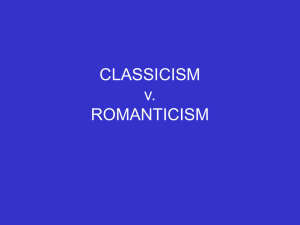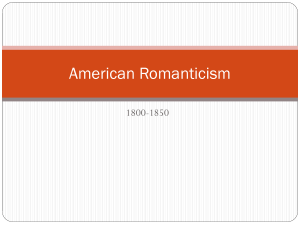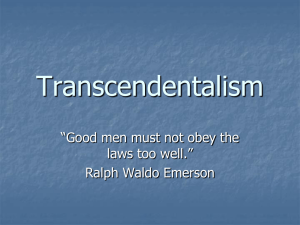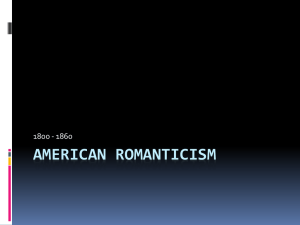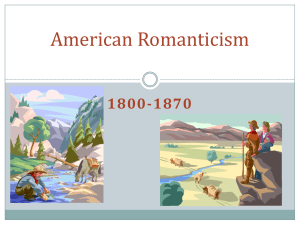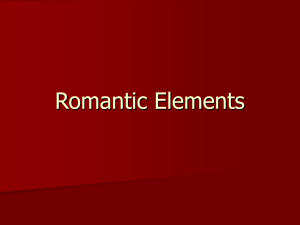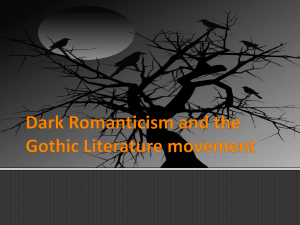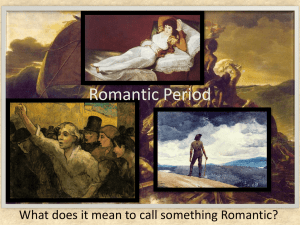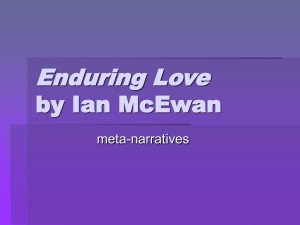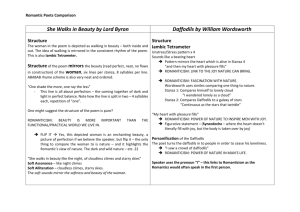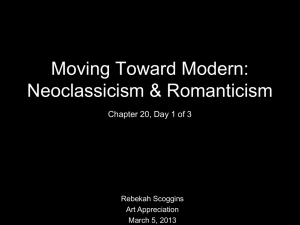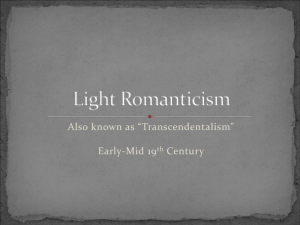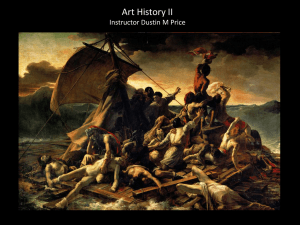American Romanticism: 1800-1860
advertisement
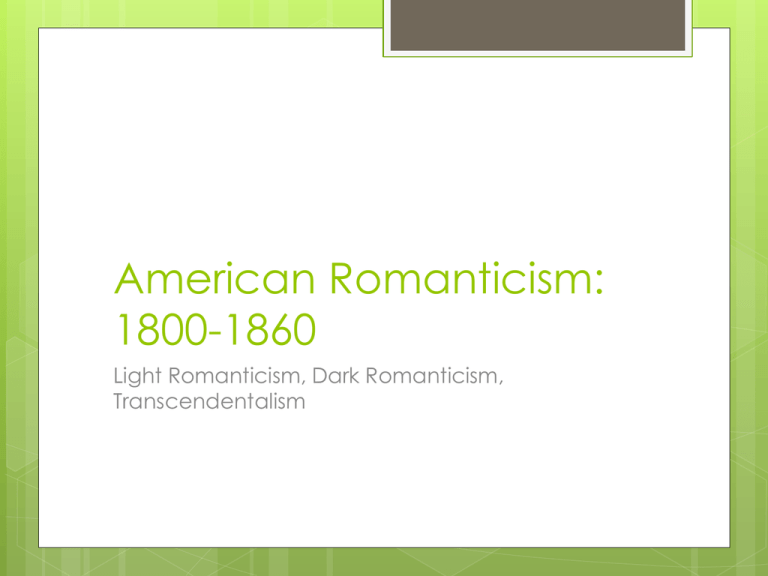
American Romanticism: 1800-1860 Light Romanticism, Dark Romanticism, Transcendentalism Romanticism as a Journey Away from Corruption of civilization Limits of rational thought Romanticism as a Journey Toward Source The Deerslayer N. C. Wyeth Integrity of nature Freedom of imagination Which are you? Romantic • Intuitive • Nature-loving Rational • Practical • Worldly Imagination Truth Beauty Big Ideas of Romanticism Intuition Experience Individual Nature Ideal source: Skipp, Francis in American Literature Characteristics of American Romanticism Values feeling over reason Places faith in inner experience and imagination Shuns artificiality of civilization; seeks unspoiled nature Prefers youthful innocence to educated sophistication Emphasizes individual freedom and worth Believes nature’s beauty can lead to spiritual and moral development Elements of Literature (145) Characteristics of American Romanticism Looks backward to the wisdom of past and distrusts progress (Science) Finds beauty and truth in Exotic locales Supernatural realm Inner world of the imagination Sees poetry as the highest expression of the imagination Finds inspiration in myth, legend, and folk culture Elements of Literature (145) A New Hero Young or youthful Innocent and pure of purpose Sense of honor based on principle higher than society’s rules Understanding of the world is intuitive, not based on formal learning Loves nature Quests for higher truth in the natural world Elements of Literature 149 Legacy Lasting Effects of American Romanticism Humanitarian reform Liberal religious movements Abolitionism Feminism Unitariansim Universalism Economic experiments Communal living (Brook Farm, New Harmony) James D. Hart, The Oxford Companion to American Literature, 6th ed. (572). Light Romanticism Emily Dickinson “Some Keep the Sabbath Going to Church” Walt Whitman “Learn'd Astronomer” Focus on the inherent inner light of humans, the beauty of nature, and the perfection of the universe. Dark Romanticism Nathaniel Hawthorne “The Birthmark” (packet 131) Focus on the inherent inner darkness of humans, the perverseness of spirit, and the punishing nature of the universe. Hudson River Painters Art as an agent of moral and spiritual transformation Kindred Spirits, Asher B. Durand, 1849 Transcendentalism Immanuel Kant “…concerned not with objects but with our mode of knowing objects." source Transcendental Beliefs the spark of divinity lies within man; everything in the world is a microcosm of existence the individual soul is identical to the world soul (Emerson’s Over-Soul) By meditation, by communing with nature, through work and art, man could transcend his senses and attain an understanding of beauty and goodness and truth. source Transcendentalists Belief in the Inner Light Authority of Self Ralph Waldo Emerson’s doctrine of SelfReliance Henry David Thoreau's civil disobedience, Utopian communities at Brook Farm source Transcendentalism Ralph Waldo Emerson “Self Reliance” (packet 67) “Henry David Thoreau Walden Solitude (packet 80) Conclusion (packet 84) Built on the idea of the inner light, but believed that this was the divine spark, that humans carry God inside us. And because we all carry the divine, we are all capable of perfection. Anti-Transcendentalism Causes Opposed the optimism and idealism of transcendentalists Dwelt on guilt and remorse over past sins Discontented with circumstances in America Women’s rights, slavery, poor educational system, lack of justice Key Beliefs/Philosophies Belief in potential destructiveness of human spirit Belief in individual truths, not universal ones Focus on man’s uncertainty and limitations in the universe Nature is vast and incomprehensible Style Man vs. Nature conflicts – bring out evil in humanity Focus on protagonist’s inner struggles Usually outsiders who are alienated from society Lots of symbolism and allegory
